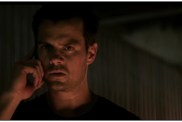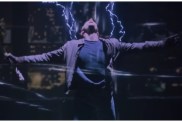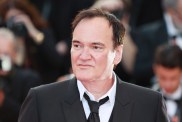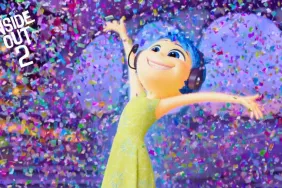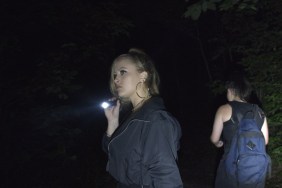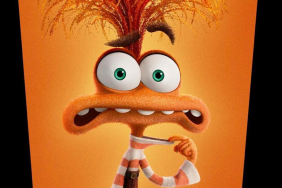
8 out of 10
Voice Cast:
Amy Poehler as Joy
Phyllis Smith as Sadness
Kaitlyn Dias as Riley
Mindy Kaling as Disgust
Bill Hader as Fear
Lewis Black as Anger
Richard Kind as Bing Bong
Diane Lane as Mom
Kyle MacLachlan as Dad
Jess Harnell as Additional Voices
Carlos Alazraqui as Father’s Fear / Brazilian Helicopter Pilot
Laraine Newman as Mother’s Fear
Lori Alan as Mother’s Sadness
Directed by Pete Docter, Co-Directed by Ronnie del Carmen
Review:
After two years without a movie, Pixar Animation Studios is back trying to reestablish themselves as the masters of animated storytelling with the simple premise of going inside the mind of an 11-year-old girl named Riley, who is forced to move from her Midwestern home to San Francisco, a situation she has trouble dealing with. The idea is that we’re all controlled by a series of five emotions: Joy, Sadness, Disgust, Fear and Anger, all of them driven by their own personalities. In the case of Riley, they’re portrayed by Amy Poehler, Phyllis Smith, Mindy Kaling, Bill Hader and Lewis Black, which makes it evident this concept will be used for optimal humor, although Inside Out is much more than a stream of jokes.
The story begins with Riley’s birth, which is also the awakening of Joy, who over the next few years is joined in “Headquarters” by others, including Sadness, Disgust, Fear and Anger, who each have their roles in creating Riley’s mood and personality. As one might expect, Joy is exactly as she’s named, an energetic ball of enthusiasm who tries to motivate the others to be just as happy as she is. As Riley gets older, others become more dominant, particularly the sad sack that is Sadness, who always finds a way of bringing things down. Relocating to San Francisco with her parents sends Riley on an emotional roller coaster that keeps them quite busy. Another major part of their job is to create and store Riley’s most important, core memories, kept in a special location where they branch out to create islands that make up Riley’s personality: family, friendship and hockey are three of the things that drive the girl.
This essential premise gives director Pete Docter (Up, Monster’s, Inc.) the opportunity to create an incredibly complex and layered film that has lots of funny moments and puns like showing how the residents of Headquarters are affected by “brain freeze” and how everything they do affects Riley’s behavior, which her parents start to notice as well.
The characters are fun once they start growing on you, although it takes some time before you can adjust to having such differing personalities. Sadness, Fear and Disgust are basically one joke and it’s not a particularly funny one, and Anger isn’t much of a stretch for Lewis Black, who offers some of the movie’s funniest moments. One of the best scenes is when we’re at the dinner table and we realize that Riley’s parents have their own Headquarters, something that could have been re-explored to get even bigger laughs.
The drama comes in the form of Joy trying to keep Sadness’ constant interference from affecting Riley to the point where the two of them end up stranded outside Headquarters leaving the other three in control. This is where Inside Out turns into an epic adventure as Joy and Sadness visit different areas of the brain, places like Imagination Land and Riley’s subconscious and they meet characters like the Richard Kind-voiced Bing Bong, Riley’s childhood imaginary friend who she has forgotten.
That’s really where Inside Out excels since it uses this story to show how we grow up and how our innocence gets lost as we start to be affected by the world around us. For parents of young kids, this is a fairly jarring wake-up-call to be reminded that their children won’t be children forever, something that becomes heartbreakingly evident as Joy and Sadness’ absence starts affecting Riley’s memories and personality. (Although if someone’s emotions suddenly started going haywire, wouldn’t they just turn a sociopath or a vegetable? I guess that’s a very different movie.)
Inside Out does have the benefit of being able to jump from the “mind world” to the real world, where we see how the emotions’ actions are affecting Riley’s behavior, although the real world stuff is fairly mundane in comparison, even if the photorealism contrasts well with the fantastical world inside Riley’s mind. This may be partially why Inside Out, like Up, feels a bit uneven at times, since it’s trying so hard to be funny one moment and then things take a dark turn, making it hard to figure out how to feel about things. Even so, it all leads to an incredibly emotional last act as tear-inducing as the famous five-minute silent montage from Up.
It’s hard to consider Inside Out a kid’s movie, since there’s so much kids probably won’t understand or appreciate. Even so, it’s another feather in the cap for Docter, who will probably continue Pixar’s run at dominating the Oscars by once again breaking away from what can/can’t-should/shouldn’t been done with animation.
The Bottom Line:
As we’ve come to expect from Pixar, Inside Out is another gorgeous, colorful film that often makes you forget you’re watching animation. Inside Out is a bittersweet look at childhood’s end that might be Pixar’s most layered and complex film since Ratatouille.
Inside Out
-
Inside Out

-
Inside Out

-
Inside Out

-
Inside Out

-
Inside Out

-
Inside Out

-
Inside Out

-
Inside Out

-
Inside Out

-
Inside Out

-
Inside Out

-
Inside Out

-
Inside Out

-
Inside Out

-
Inside Out

-
Inside Out

-
Inside Out

-
Inside Out

-
Inside Out

-
Inside Out

-
Inside Out

-
Inside Out

-
Inside Out

-
Inside Out

-
Inside Out

-
Inside Out

-
Inside Out

-
Inside Out

-
Inside Out

-
Inside Out

-
Inside Out

-
Inside Out

-
Inside Out

-
Inside Out

-
Inside Out

-
Inside Out

-
Inside Out

-
Inside Out

-
Inside Out

-
Inside Out

